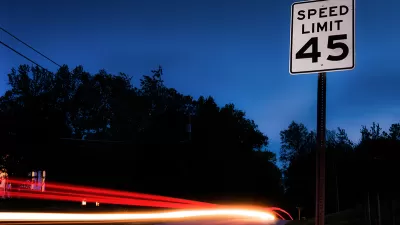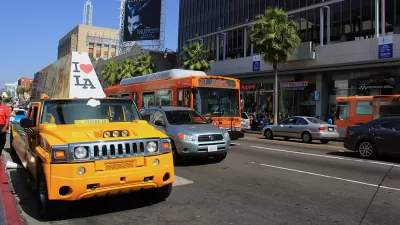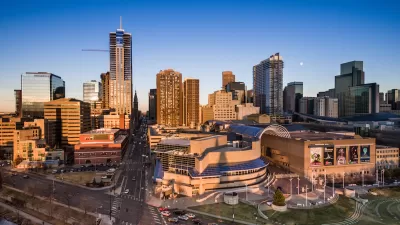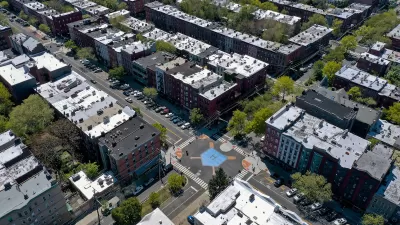In California and much of the rest of the country, says Andrew Said, the laws governing speed limits and enforcement are dangerously outdated, especially where pedestrians and cyclists are concerned. What could we change?

They aren't part of the built environment, but laws often dictate how safe places are to use. According to a piece by Andrew Said, California's speed limit laws are outdated, and unsafe streets are the result.
For example, "In Los Angeles, police are unable to ticket speeding drivers for violating the posted speed limit on 75 percent of the city’s streets. Why not? It is because the speed surveys required by law for these streets have expired."
Those speed surveys set limits based on the "prevailing speed." That is, how fast cars are travelling in the 85th percentile. "Once this speed of majority drivers is determined, the law only allows an additional 5 mph reduction to account for unforeseen safety conditions." And that's a truly auto-centric legal method.
"In countries with the highest rates of bicycle ridership, the severity of injuries caused by crashes at a given speed is taken into account when establishing speed limits. This approach is known as Injury Minimization, or Safe Systems. The idea is to minimize the probability of death and serious injury."
Said notes that in California, Injury Minimization already exists in mandated 25-mph school zones, which must conform to that limit regardless of prevailing speed. "What about designating a pedestrian zone? Or an active transportation zone? The same rationale of protecting vulnerable road users could apply."
FULL STORY: Legal Obstacles To Safe Streets: California Speed Limit Laws

Alabama: Trump Terminates Settlements for Black Communities Harmed By Raw Sewage
Trump deemed the landmark civil rights agreement “illegal DEI and environmental justice policy.”

Planetizen Federal Action Tracker
A weekly monitor of how Trump’s orders and actions are impacting planners and planning in America.

The 120 Year Old Tiny Home Villages That Sheltered San Francisco’s Earthquake Refugees
More than a century ago, San Francisco mobilized to house thousands of residents displaced by the 1906 earthquake. Could their strategy offer a model for the present?

In Both Crashes and Crime, Public Transportation is Far Safer than Driving
Contrary to popular assumptions, public transportation has far lower crash and crime rates than automobile travel. For safer communities, improve and encourage transit travel.

Report: Zoning Reforms Should Complement Nashville’s Ambitious Transit Plan
Without reform, restrictive zoning codes will limit the impact of the city’s planned transit expansion and could exclude some of the residents who depend on transit the most.

Judge Orders Release of Frozen IRA, IIJA Funding
The decision is a victory for environmental groups who charged that freezing funds for critical infrastructure and disaster response programs caused “real and irreparable harm” to communities.
Urban Design for Planners 1: Software Tools
This six-course series explores essential urban design concepts using open source software and equips planners with the tools they need to participate fully in the urban design process.
Planning for Universal Design
Learn the tools for implementing Universal Design in planning regulations.
Clanton & Associates, Inc.
Jessamine County Fiscal Court
Institute for Housing and Urban Development Studies (IHS)
City of Grandview
Harvard GSD Executive Education
Toledo-Lucas County Plan Commissions
Salt Lake City
NYU Wagner Graduate School of Public Service





























